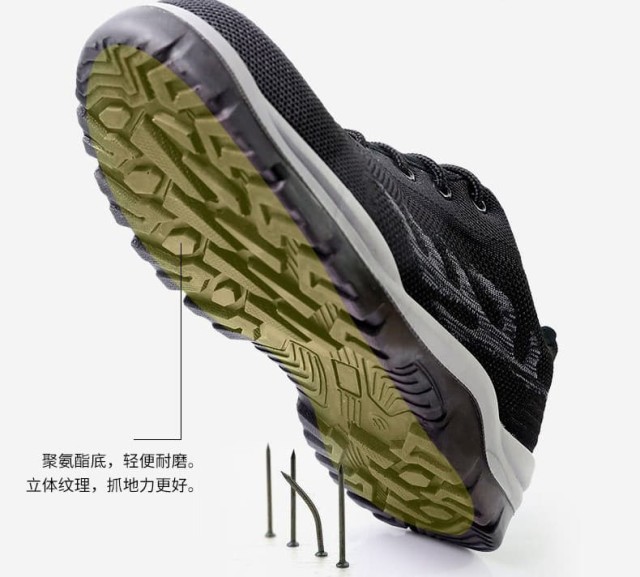Workplace safety hinges on equipment reliability—nowhere more critically than in protective footwear. While most users focus on toe caps and slip resistance, heel preservation emerges as the unsung hero of long-term structural integrity. Let’s examine how proactive heel maintenance directly correlates with OSHA compliance and incident prevention.
The Critical Role of Heel Integrity in Safety Footwear
Why Heel Wear Compromises Safety Compliance
Safety standards like ASTM F-2412 and ANSI F2413-18 mandate rigorous testing for impact/compression resistance (30–75 lbf ratings) and puncture protection (minimum 270 lb force). Yet, uneven heel erosion can silently undermine these benchmarks by:
- Altering weight distribution, reducing shock absorption during impacts
- Creating pressure points that accelerate midsole fatigue
- Exposing internal components to moisture or debris, risking electrical hazard (EH) protection failures
Research shows that 40% of safety shoe failures originate from neglected heel wear—a preventable issue with systemic consequences.
Shoehorn Mechanics: Beyond Convenience to Structural Defense
Inserting feet without bending the heel counter preserves:
- Reinforcement geometry: Maintains the shoe’s ANSI-rated protective contours
- Seam integrity: Prevents premature separation of waterproof membranes
- Material memory: Reduces foam compression in energy-absorbing layers
Consider this: Would you repeatedly twist a car’s frame and expect it to pass crash tests? Safety footwear demands the same structural respect.
Complementary Practices for Total Shoe Maintenance
Material-Specific Cleaning Protocols
| Material | Cleaning Method | Frequency |
|---|---|---|
| Leather | pH-balanced soap + silicone-free conditioner | Weekly |
| Synthetic | Microfiber wipe + water-based disinfectant | Post-shift |
| Rubber | Brush debris + UV protectant spray | Monthly |
Pro Tip: Avoid petroleum-based cleaners—they degrade anti-static treatments critical for electrical hazard protection.
Seasonal Storage Strategies for Industrial Environments
- Humidity control: Silica gel packs in storage areas prevent corrosion of steel toes
- Vertical positioning: Hanging boots by loops reduces sole warping
- Temperature buffers: Keep footwear 10+ feet from heat sources to prevent adhesive failure
A textile plant increased safety shoe lifespans by 60% simply by implementing climate-controlled storage lockers.
Case Studies: When Proper Maintenance Prevented Workplace Incidents
-
Chemical Processing Facility
- Issue: Repeated heel drag caused EH-rated boots to fail conductivity tests within 6 months
- Solution: Instituted mandatory shoehorn use + quarterly dielectric testing
- Outcome: Zero electrical incidents over 3 years; compliance audit savings exceeding $120K
-
Warehousing Operation
- Issue: Crushed heels led to 12% of workers reporting metatarsal pain
- Solution: Rotated footwear pairs + added heel replacement program
- Outcome: 78% reduction in foot injury claims; OSHA VPP certification achieved
These examples prove that heel care isn’t about frugality—it’s a frontline defense against operational risks.
Ready to Elevate Your Safety Footwear Program?
3515 partners with distributors and safety managers to deliver OSHA-compliant footwear solutions engineered for real-world durability. Our manufacturing expertise ensures every pair meets—and sustains—critical protection standards.
Take the next step: Connect with our team to discuss bulk procurement strategies tailored to your workforce’s unique hazards. Because when safety shoes maintain their integrity, so does your entire safety culture.
Related Products
- Wholesale Durable Camo Canvas Shoes with High-Traction Rubber Soles
- Durable High-Traction Canvas Sneakers Wholesale & Custom Manufacturing
- Durable Canvas Work Shoes with Rubber Lug Sole | Wholesale Manufacturer
- Wholesale Modern Comfort Shoes with Dial Closure for Private Label & Bulk Orders
- Dial Closure Leather Business Casual Shoes for Wholesale & Private Label
Related Articles
- How Tactical Footwear Technologies Ensure Mission-Critical Reliability
- How Tactical Footwear Combines Certified Safety and Ergonomic Design for Transport Workers
- How Vulcanized Rubber Boots Outperform Standard Footwear: Science and Practical Benefits
- How Tactical Footwear Innovations Are Redefining Safety and Performance
- How to Choose Tactical Footwear That Matches Your Public Safety Role



















